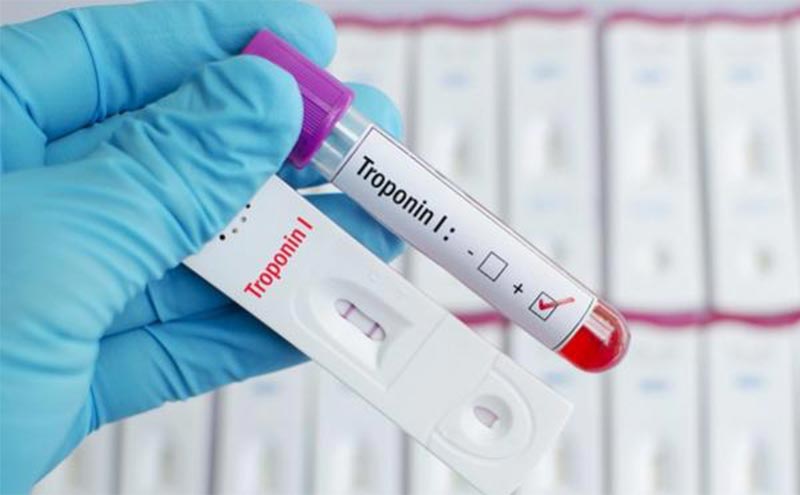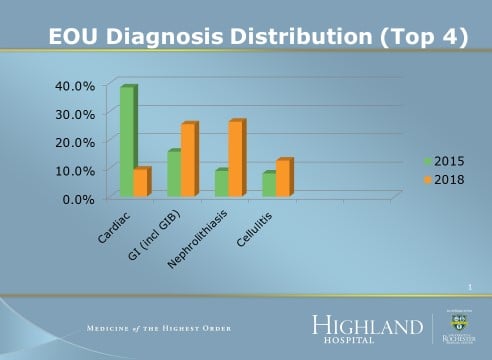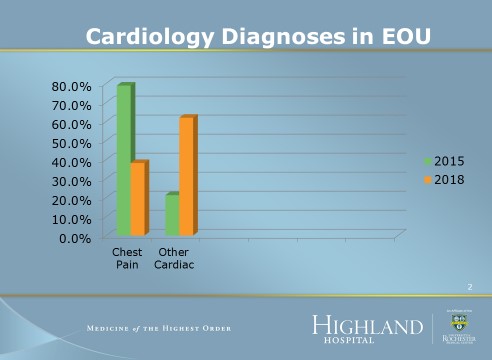
Impact of Highly Sensitive Troponin Testing in ED Observation Unit Case Mix
The ED Observation Unit at Highland Hospital (Rochester, NY) has been operating since 2011. In May of 2018, the University of Rochester Medical Center introduced global clinical use of a highly sensitive troponin protocol for the evaluation of patients presenting with potential cardiac ischemia. The process involves measuring a troponin at time 0 and at 3 hours. Patients with either normal troponin levels or a “negative delta” are determined to be at low risk and can be discharged safely from the ED (for outpatient provocative testing, if necessary). This was a change from the “usual” practice of measuring troponins at a minimum of time 0 and 6, which often resulted in an observation stay.
Prior to the introduction of the more rapid “rule out” protocol, many patients with undifferentiated, usually “atypical” chest pain would be triaged to the ED observation unit. This was reflected in an audit from 2015 which showed nearly 40% of patients had some type of cardiac symptom or finding (and almost 80% of these patients had a chest pain related complaint).
A repeat diagnosis audit after the introduction of the highly sensitive troponin protocol shows a significant drop in cardiac diagnoses (under 10%) which is almost certainly attributable to that specific change. It would be interesting to hear if other similar units found comparable results after adopting highly sensitive troponin testing.


Robert S. Bennett MD
Medical Director, ED Observation Unit
Associate Professor Clinical Emergency Medicine


